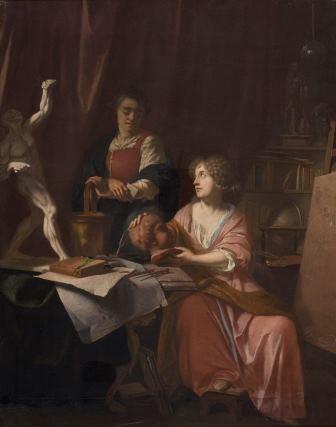Recommendation
In a letter dated 4 May 2007, the Minister for Education, Culture and Science (hereafter referred to as: the Minister) requested the Restitutions Committee to issue a recommendation regarding the application for restitution of the painting Paintress and servant in a studio by J. Voorhout I. After its return to the Netherlands after World War II, this work of art became part of the Netherlands Art Property Collection (hereafter referred to as: the NK collection) under inventory number NK 1973. NK 1973 is currently housed in the depot of the Netherlands Institute for Cultural Heritage in Rijswijk.
